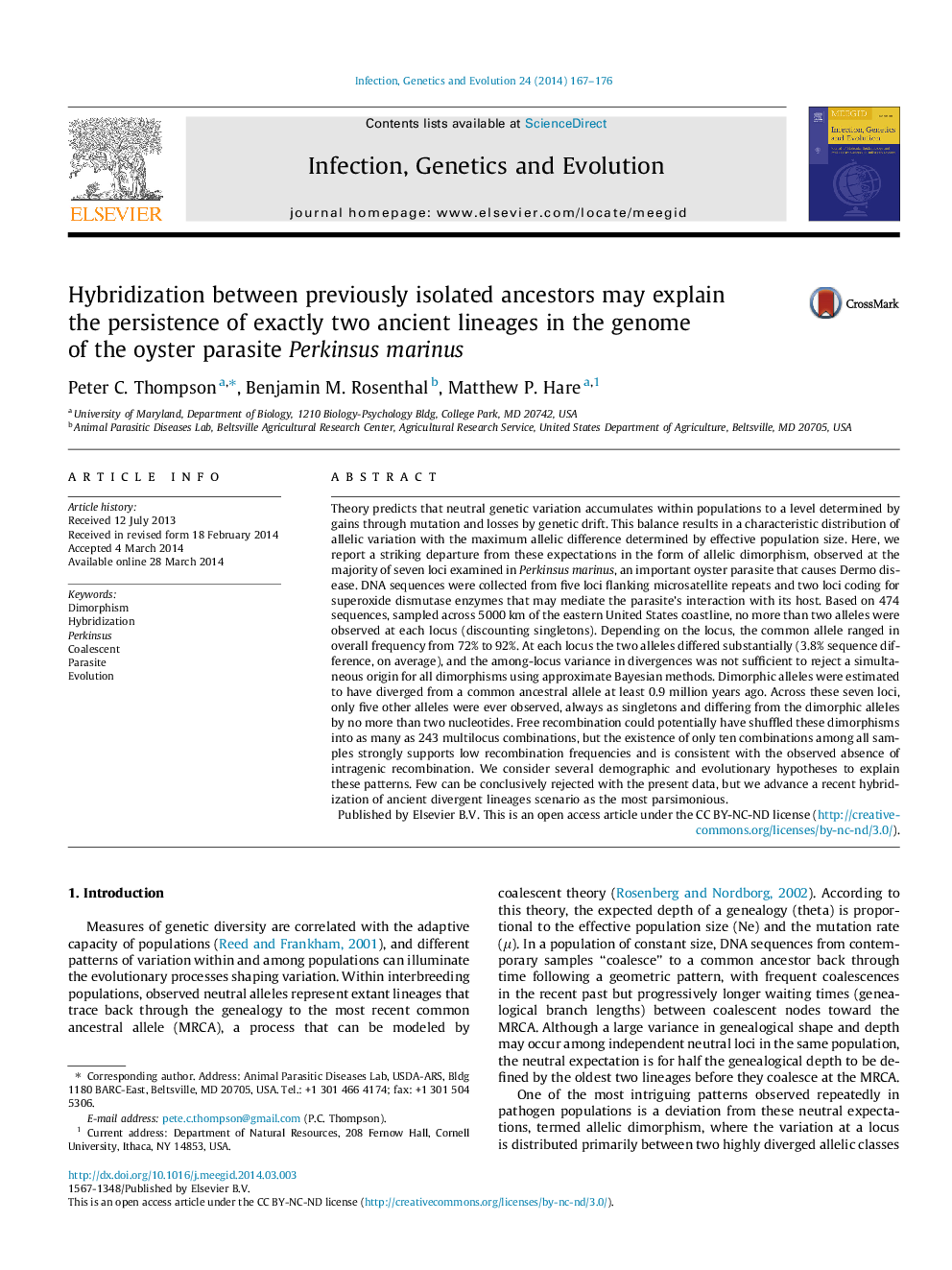| کد مقاله | کد نشریه | سال انتشار | مقاله انگلیسی | نسخه تمام متن |
|---|---|---|---|---|
| 5909717 | 1570179 | 2014 | 10 صفحه PDF | دانلود رایگان |

- Exactly two divergent allelic classes were encountered at six out of seven loci.
- These two allelic classes have been diverging for at least 900,000Â years.
- Consistency of dimorphic divergence supports simultaneous divergence at all loci.
- Dimorphism may indicate ancient separation of strains, then recent hybridization.
Theory predicts that neutral genetic variation accumulates within populations to a level determined by gains through mutation and losses by genetic drift. This balance results in a characteristic distribution of allelic variation with the maximum allelic difference determined by effective population size. Here, we report a striking departure from these expectations in the form of allelic dimorphism, observed at the majority of seven loci examined in Perkinsus marinus, an important oyster parasite that causes Dermo disease. DNA sequences were collected from five loci flanking microsatellite repeats and two loci coding for superoxide dismutase enzymes that may mediate the parasite's interaction with its host. Based on 474 sequences, sampled across 5000Â km of the eastern United States coastline, no more than two alleles were observed at each locus (discounting singletons). Depending on the locus, the common allele ranged in overall frequency from 72% to 92%. At each locus the two alleles differed substantially (3.8% sequence difference, on average), and the among-locus variance in divergences was not sufficient to reject a simultaneous origin for all dimorphisms using approximate Bayesian methods. Dimorphic alleles were estimated to have diverged from a common ancestral allele at least 0.9 million years ago. Across these seven loci, only five other alleles were ever observed, always as singletons and differing from the dimorphic alleles by no more than two nucleotides. Free recombination could potentially have shuffled these dimorphisms into as many as 243 multilocus combinations, but the existence of only ten combinations among all samples strongly supports low recombination frequencies and is consistent with the observed absence of intragenic recombination. We consider several demographic and evolutionary hypotheses to explain these patterns. Few can be conclusively rejected with the present data, but we advance a recent hybridization of ancient divergent lineages scenario as the most parsimonious.
Journal: Infection, Genetics and Evolution - Volume 24, June 2014, Pages 167-176